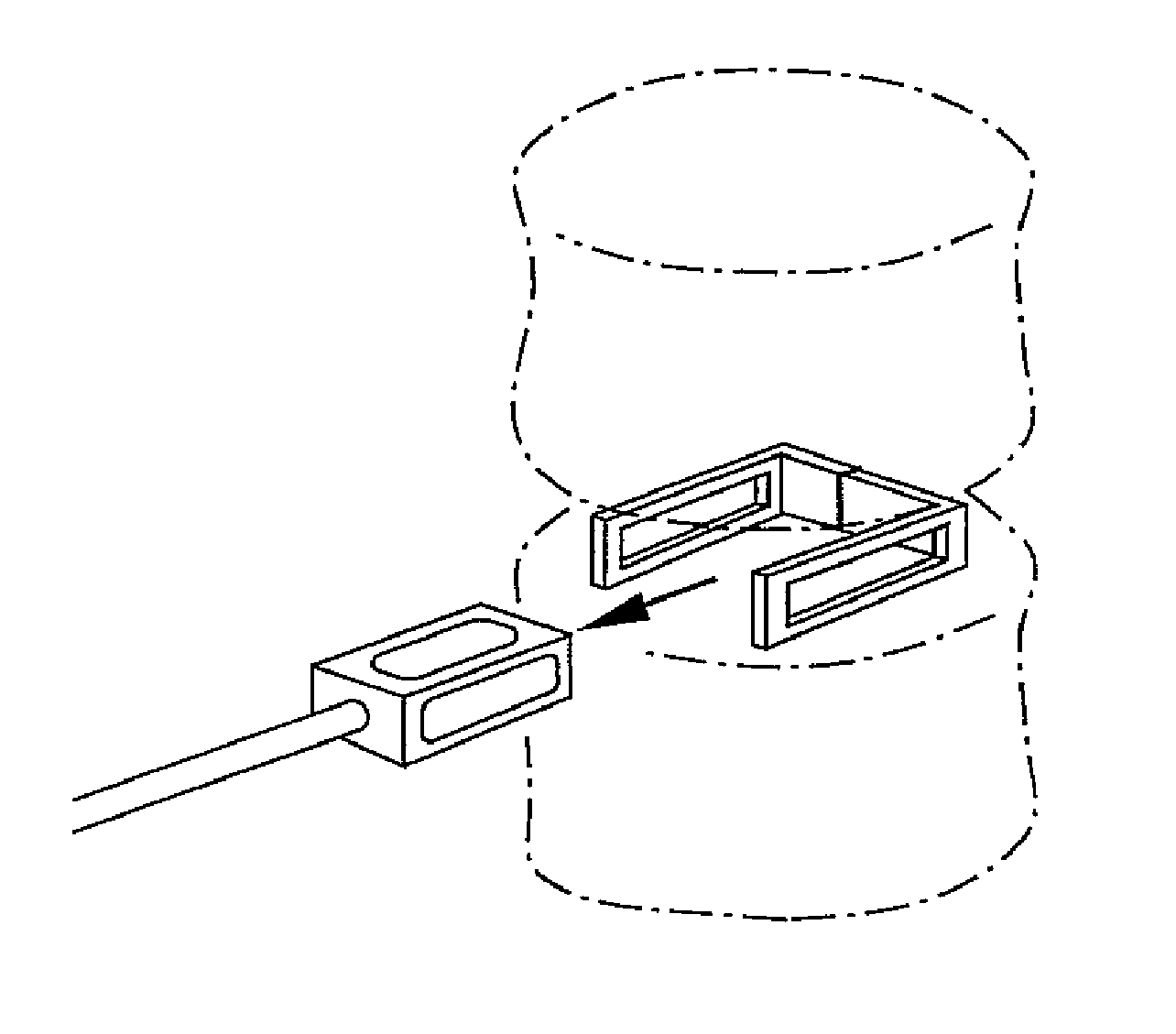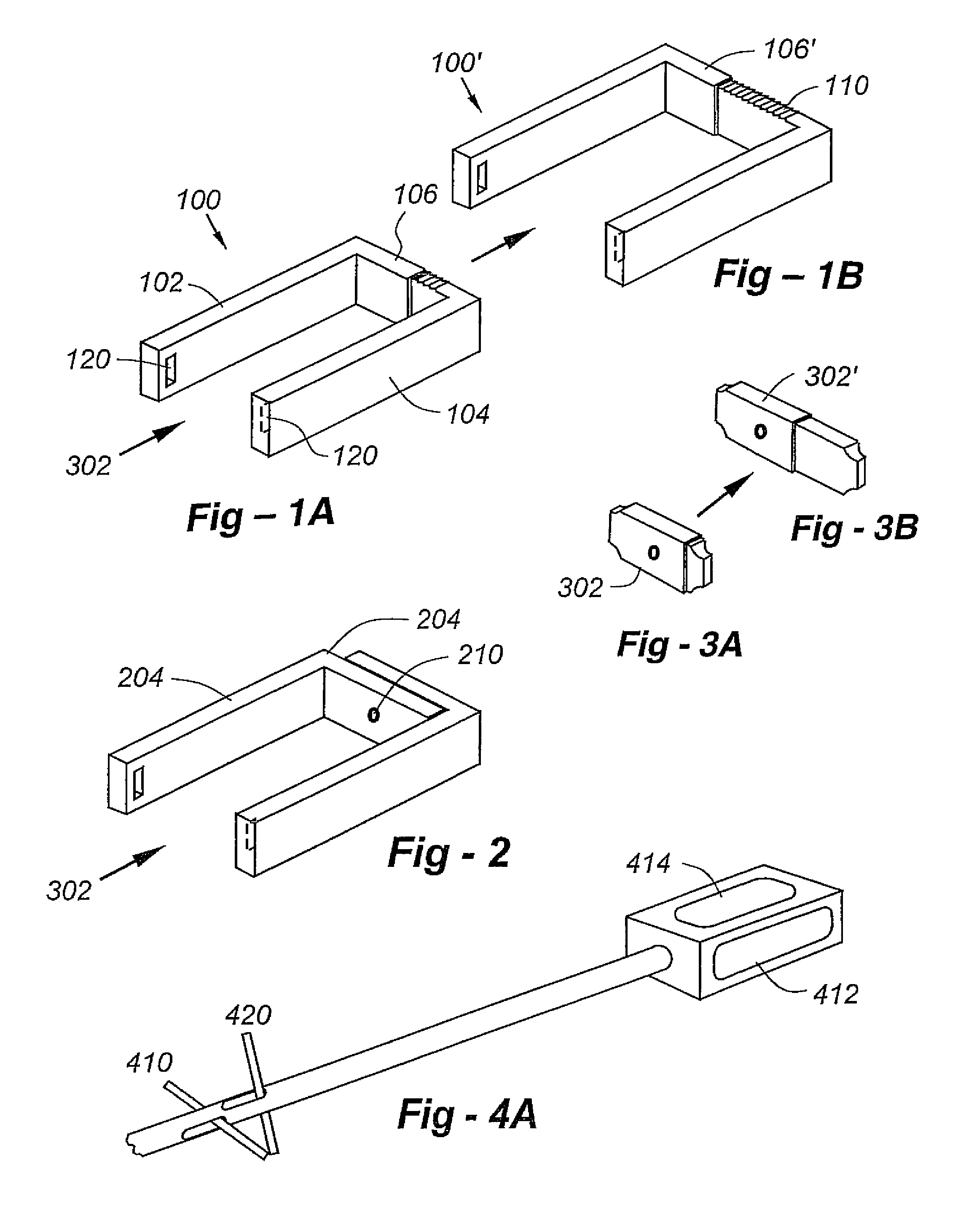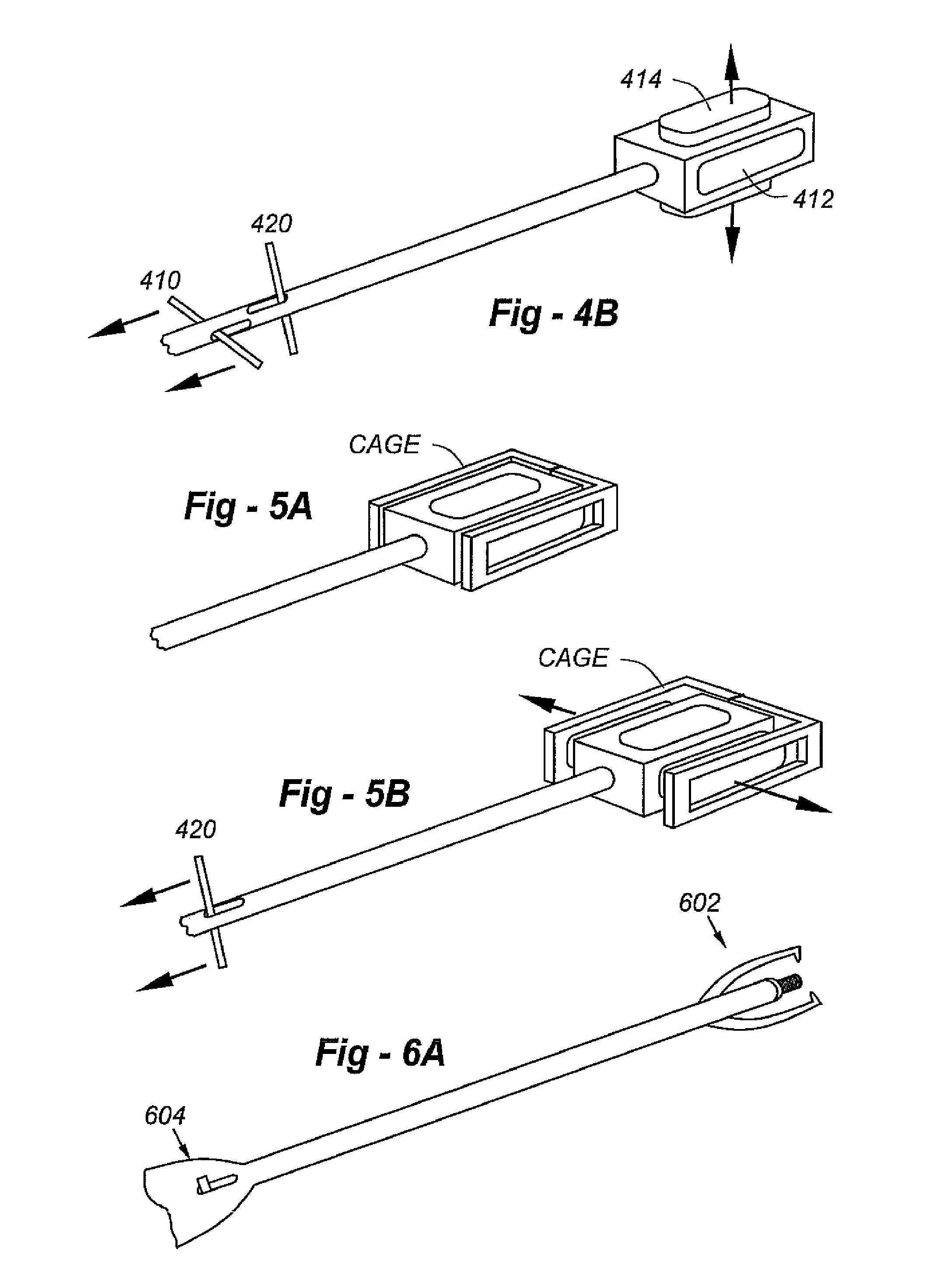Percutaneous posterior lateral in-situ cage
a percutaneous and in-situ cage technology, applied in the field of percutaneous posterior lateral in-situ cage, can solve the problems of increasing the morbidity of anterior in-situ cage placement, large dissection, plif and tlif approaches,
- Summary
- Abstract
- Description
- Claims
- Application Information
AI Technical Summary
Benefits of technology
Problems solved by technology
Method used
Image
Examples
Embodiment Construction
[0043]This invention resides in an expandable, locking intervertebral cage facilitating a minimally invasive percutaneous posteo-lateral approach. FIG. 9 is a perspective view drawing showing the expanded, filled cage in position between upper and lower vertebral bodies. In this description, the cage designs and novel instruments will first be introduced, followed by a detailed description of the preferred surgical procedure.
[0044]The cage is preferably radiolucent, being composed of a carbon fiber, but with one or more radiopaque markers to provide a certain degree of visualization. Full or partial metal or ceramic construction may also be used. Some or all of the walls of the cage may include superior and / or inferior surface features to enhance positioning and / or minimize back-out, and the posterior wall may be indented to prevent neurocompression. The sidewalls of the cage may further include a recessed face with nipple indents and locking fasteners. Multiple cages may provided, ...
PUM
 Login to View More
Login to View More Abstract
Description
Claims
Application Information
 Login to View More
Login to View More - R&D
- Intellectual Property
- Life Sciences
- Materials
- Tech Scout
- Unparalleled Data Quality
- Higher Quality Content
- 60% Fewer Hallucinations
Browse by: Latest US Patents, China's latest patents, Technical Efficacy Thesaurus, Application Domain, Technology Topic, Popular Technical Reports.
© 2025 PatSnap. All rights reserved.Legal|Privacy policy|Modern Slavery Act Transparency Statement|Sitemap|About US| Contact US: help@patsnap.com



